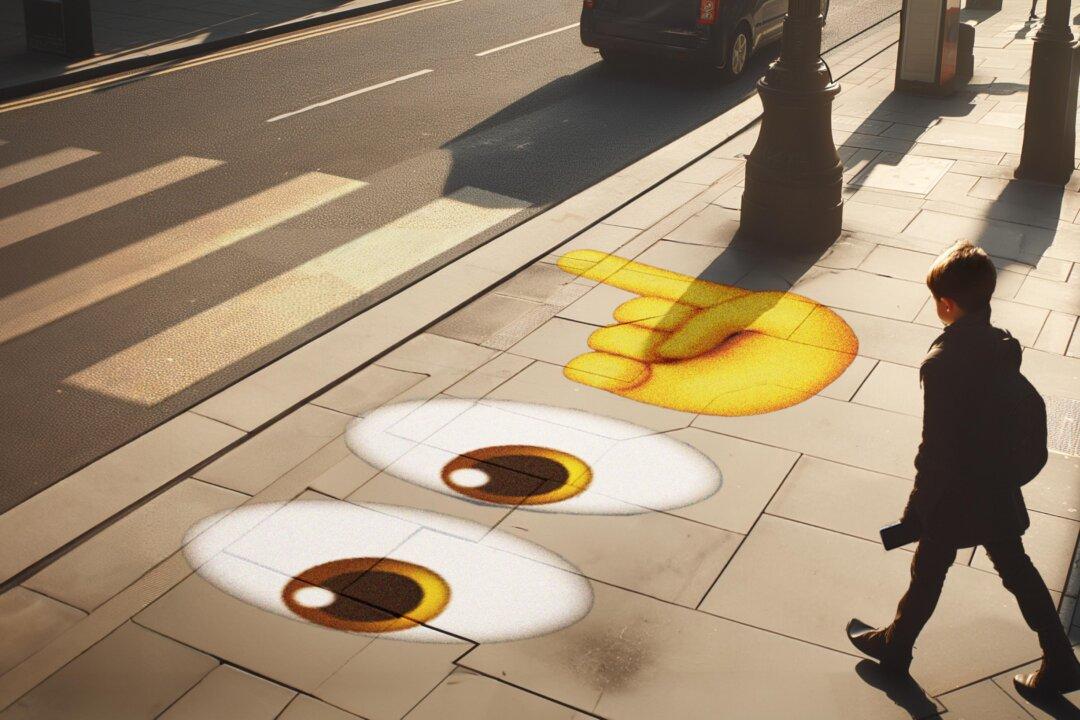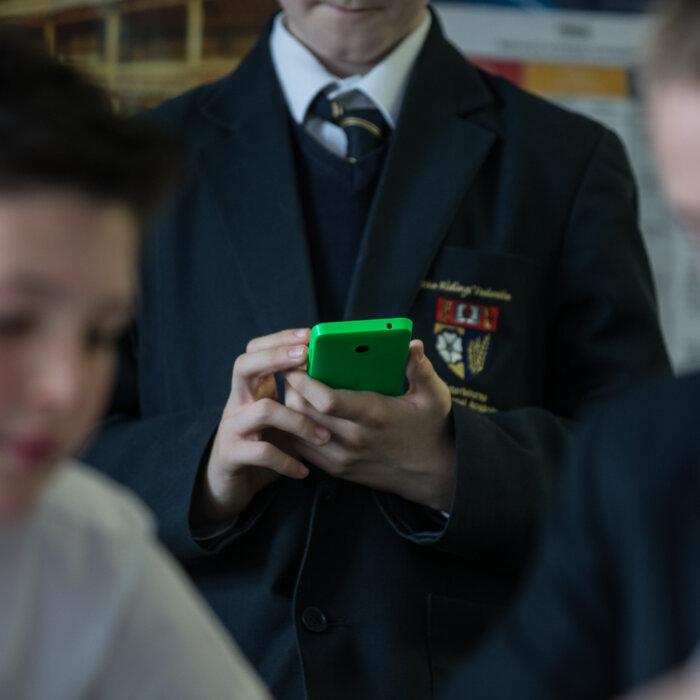One in five secondary school pupils, distracted on the phone, have either been hit or narrowly missed by vehicles, a survey has found.
A poll by Churchill motor insurance said that 84 percent of secondary pupils admitted having their eyes on the phone screen when walking near roads. Some 18 percent have been hit by a vehicle or were nearly missed.
Research shows that a tenth of children, studied in a mobile phone usage analysis, were filmed crossing the road outside their school while glued to their phones.
More than 69 percent of children admit they are not aware of their surroundings, while distracted on their phone and walking on the street. Almost half of students use their phones while walking to check social media updates.
Ewan Robertson, head of news and issues at Churchill said that the trend leads to “a worrying number of accidents, including tragic fatalities.”
“In today’s digital age, diverting attention away from the screen is a challenge, but one needed to ensure safety when walking,” he said.
A road safety guide, published by the Royal Society for the Prevention of Accidents (Rospa) in 2020, found that every month 1,200 children are injured in traffic related collisions that happen within 500 metres of a school.
Rospa also reported that almost half of all accidents that happen on the road in the vicinity of schools occur between 3 p.m. and 6 p.m., which is when the school usually finishes for the day and students travel back home.
The principal of Wykham Park Academy in Banbury, Oxfordshire, Carry Berry said that while mobile phones are important for the pupils, they can also be distracting.
Eyes on the Road
To raise awareness of the risks, Churchill has launched the “Screen down, Eyes up” campaign. It is meant to “help spark discussions among students and schools, to promote greater road safety awareness.”The campaign found that one in ten secondary school pupils admit they aren’t aware of the dangers of using a phone while walking near a road. Almost a half of those, who own a phone, would like to see more educational campaigns on the dangers of using phones while walking.
Clinical psychologist Jessamy Hibberd, who partnered with Churchill to reimagine “what roads could look like to help grab students’ attention,” has warned that children don’t not combine different sensory information the same way as adults.
“Secondary school children are also more impulsive and do not process risk in the same way as adults, which means that signage directed at them around schools needs to be more noticeable and ‘direct’ to grab attention away from their phones. Bright contrasting colours, simple messages, multiple attention alerts incorporating sound and texture on the ground, are all essential factors to encourage greater attention of the risks when crossing the road,” she said.
Among top tips for getting children’s attention away from their phones and onto the roads is using clear and striking symbols and signs, such as the “eyes emoji or clever use of arrows.”
Jessamy also advised using attention-grabbing colours, such as black and yellow or white and red, as well as an auditory alert played on speakers at pedestrian crossings.
Churchill’s regional findings showed that Scotland had the highest percentage of children who feel most distracted while walking near the road.







